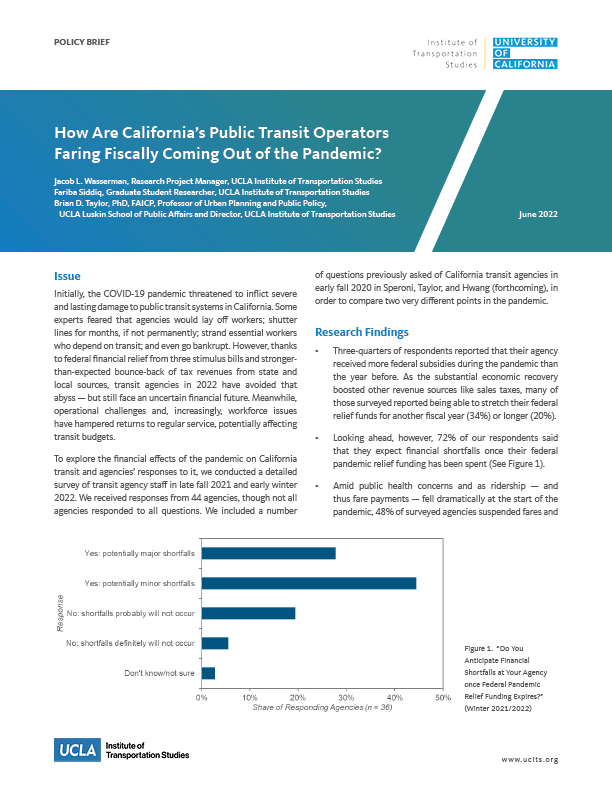Date: June 14, 2022
Author(s): Jacob L. Wasserman, Fariba Siddiq, Brian D. Taylor
Abstract
Initially, the COVID-19 pandemic threatened to inflict severe and lasting damage to public transit systems in California. Some experts feared that agencies would lay off workers; shutter lines for months, if not permanently; strand essential workers who depend on transit; and even go bankrupt. However, thanks to federal financial relief from three stimulus bills and stronger-than-expected bounce-back of tax revenues from state and local sources, transit agencies in 2022 have avoided that abyss — but still face an uncertain financial future. Meanwhile, operational challenges and, increasingly, workforce issues have hampered returns to regular service, potentially affecting transit budgets.
To explore the financial effects of the pandemic on California transit and agencies’ responses to it, we conducted a detailed survey of transit agency staff in late fall 2021 and early winter 2022.
While the COVID-19 pandemic caused ridership on public transit and shared mobility to drop precipitously and put severe strain on their finances and operations, all was far from well prior to the pandemic. Transit ridership had dropped across the state in the half-decade prior to the pandemic, despite increasing public investment, and the relationship between shared mobility and regulators was oft-disputed. Thus, looking during and beyond the recovery from the pandemic, this project seeks to answer the question: what is and should be the future role and structure of public transit and public shared mobility in California?


